Por: Jaume Carbonell
Compartir saberes y aprendizajes en una red de centros que pretende la cooperación para el fortalecimiento del conocimiento pedagógico y de las relaciones entre agentes educativos.
¿Hacia dónde tiene que ir la red en esta nueva época?
Esta es la pregunta que polariza el encuentro inicial del cuarto año de funcionamiento de la AEX, celebrada el pasado 16 de noviembre en Instituto Icaria de Barcelona, al que asiste una representación de todos los centros. La modera Juanmi Muñoz, asesor técnico docente del Centro de Recursos Pedagógicos del distrito de Sant Martí, que se ocupa de la secretaria técnica del proyecto. En primer lugar, se exponen las propuestas que han sido previamente discutidas en los claustros. Unas tratan de dar continuidad a los proyectos intercentros que ya funcionan mientras otros sugieren nuevas iniciativas: evaluación del alumnado; desarrollo sostenible; identificación de los edificios singulares del barrio con una mirada matemática y social; estrategias para potenciar la reflexión ante los conflictos; papel de los contenidos en el curículum; emociones y su acompañamiento; actividades del alumnado de 6º de primaria con los institutos con el objeto de conocer los espacios y las dinámicas para disminuir “el miedo” al cambio; transformación de los espacios; robótica; atención a la diversidad real; convivencia; acogida de los inmigrantes; evaluación…
Las propuestas se combinan con reflexiones: “Somos conscientes de la riqueza de los contactos en red pero, hasta ahora, nos llega como un trabajo añadido a muchas cosas que ya hacemos. Quizás el esfuerzo ha de venir por incorporarlo al currículum ordinario sin carga extra de trabajo… A veces tengo la sensación de que nos auto-ahogamos” tratando de participar en actividades que nos suponen un sobreesfuerzo organizativo, que sí que aportan intercambio entre el alumnado y un “salir de la rutina” a los centros pero no necesariamente una transformación de las creencias, las maneras, los planteamientos del propio centro. En algunos lugares ya se hace pero no en otros o, al menos, de manera suficiente. Asimismo, se insiste en el impacto del conjunto de actividades: en los alumnos para que valoren qué y cómo han aprendido; en el profesorado porque implica que se plantean modificar su prácticas y, en los centros, porque algún aspecto de la mirada, la organización y el funcionamiento se modifica como consecuencia de la experiencia, se institucionaliza.
Una demanda común es la búsqueda de tiempos para una reflexión pausada y profunda que permita compartir conocimiento pedagógico para ver qué supone estar en una red para el cambio -¿qué cambio? ¿para qué? ¿hacia dónde?-; y cómo evoluciona cada centro, con sus potencialidades y dificultades: cuál es su mapa de crecimiento. Se suceden las intervenciones que van dando cuerpo a la práctica reflexiva, a la necesidad de ir más a fondo, más allá del mero intercambio, y al modo de hacer efectiva esta reflexión: ¿De qué manera podemos seguir compartiendo y contrastando nuestras necesidades y potencialidades? ¿A partir de qué elementos comunes y sobre proyectos y acciones concretas para no irse por las ramas perderse en abstracciones?
Se recuerda que el objetivo de la red es cooperar y no competir -un mantra que inspira cualquier dinámica educativa-; que cada centro aprenda; que cada profesor se empodere; y que la innovación vaya creciendo para ir averiguando, tanto docentes como familias qué y cómo se aprende- Algo que se propone hacer en grupos reducidos. Para ello se constituye un grupo motor encargado de definir mejor las preguntas que suscita la evaluación -el qué y el cómo- y estructurar el proceso de debate hasta el próximo encuentro. En el ambiente flota una preocupación: cómo hacer un buen traspaso al claustro. El encuentro se cierra con diversas informaciones relativas a los soportes digitales de “Las redes para la transformación educativa” que operan en el conjunto de Catalunya; y con una visita al instituto.

Una aventura pedagógica en cuatro fases
La AEX, que tiene como lema “compartir conocimiento, construir comunidad”, nace con la voluntad de canalizar las inquietudes y dinámicas educativas del profesorado de esta zona para la mejora de la educación a partir del diálogo entre los centros y la implicación de la administración educativa. Se trata de ir construyendo y enriqueciendo un proyecto colectivo en el que se vayan integrando metodologías de trabajo colaborativo desde el territorio y desde los centros, entre los docentes y entre todos los colectivos de la comunidad educativa. El grupo motor que lo impulsa lo forman las direcciones de los centros, un asesor externo de la UAB (Universidad Autónoma de Barcelona), el Centro de Recursos Pedagógicos, la inspección educativa y los servicios educativos del distrito. Hace un año parte de los centros de esta red se incorporaron al proyecto “redes para el cambio”, dependiente del Consorcio de Educación de Barcelona (organismo mixto del Ayuntamiento de Barcelona y del Departamento de Enseñanza de la Generalitat de Catalunya); y en esta reunión se oficializa la incorporación de toda la red AEX a las “Redes para el cambio” (diecisiete centros de infantil-primaria y secundaria, quince públicos y dos concertados).
El asesor y dinamizador externo, Màrius Martínez, pone el énfasis en la transferencia del conocimiento para ponerlo a disposición de la comunidad educativa y en el trabajo colaborativo basado en el diálogo. “El diálogo permite construir propuestas basadas en la validez de los argumentos de quien los formula y e la aprobación del grupo de trabajo, independientemente del centro de procedencia y de la posición que ocupa cada uno, independientemente del centro de procedencia y de la posición que ocupa cada uno.
El primer año de andadura cada centro escribió un artículo sobre una experiencia que estimaba de valor que posteriormente se compartía y contrastaba con otros centros. En el transcurso del segundo curso se organizaron visitas de aprendizaje a los centros; seminarios para profundizar en una experiencia o dinámica educativa concreta, y se iniciaron proyectos compartidos entre los centros que se fueron desarrollando de forma más sistemática durante el tercer curso (el cuarto se inicia con el encuentro descrito en el apartado anterior).
Hoy, 28 de junio, asistimos al pleno que cierra el tercer curso, con la asistencia de unos 300 docentes de Infantil, Primaria y Secundaria. Se inicia con los parlamentos del Comisionado de Educación del Ayuntamiento de Barcelona, Miquel Àngel Essomba, quien valora y estima que esta red constituye una anomalía en medio del discurso neoliberal de la competencia entre centros; y de la gerente del Consorcio de Educación, que se refiere al proyecto de “Redes para el cambio”, distribuidas en toda la ciudad para promover la cooperación y la equidad educativa.
A continuación se presenta y comenta una muestra de los 17 proyectos compartidos entre distintos centros y niveles educativos (pueden consultarse en esta web), en torno a la ciencia o a Barcelona como ciudad refugio, entre otros. Se subrayan las fortalezas y logros alcanzados, lo que se está aprendiendo, la colaboración de los diversos agentes, las metodologías empleadas, el grado de investigación o el conocimiento pedagógico generado. La evaluación formativa, considerada como el motor del aprendizaje, planea en el conjunto de experiencias. Al final se lanzan algunos retos para el nuevo curso: cómo incrementar la participación en el centro; qué temas hay que seguir trabajando; cómo reflexionar sobre los proyectos realizados; o cómo impacta el trabajo en red en el aprendizaje.
Cómo se vive en dos escuelas
¿Qué les aporta en concreto la red? Maria Marquès, directora de la escuela Villa Olímpica, sostiene que lo primero ha sido conocer los otros centros del entorno. “No nos conocíamos. Hemos podido contrastar diferentes puntos pedagógicos y organizativos. Y aprovecharnos de los puntos fuertes de todos para ser más fuertes”. Les ha sido de gran utilidad el trabajo de evaluación compartido con otros centros, creando instrumentos de autoevaluación y coevaluación junto con el alumnado. “Lo hemos podido aplicar a varios proyectos y grupos de trabajo. También han compartido un proyecto de transversalidad inclusiva que nace con el propósito de abrir espacios y dinámicas relacionadas con el tiempo libre.
¿Y qué han aportado? Sobre todo un proyecto inclusivo de atención a la diversidad que vienen experimentando desde hace veinte años y que da respuesta a todo al alumnado, no sólo al que requiere necesidades educativas especiales. Para ello han logrado atender las aulas con dos maestros en algunos momentos educativos clave como el trabajo por rincones, el aprendizaje de las materias instrumentales como el aprendizaje de las tres lenguas (es un centro que desde sus inicios se aplica un plan experimental de enseñanza trilingüe: catalán, castellano e inglés); y en Infantil el espacio de psicomotricidad. Y el alumnado con necesidades educativas especiales o diversidad funcional, es atendido por tres personas, con la incorporación del soporte específico de Educación Especial. Hemos demostrado que con un claustro habitual es posible esta organización. Este trabajo en red lo impulsa la comisión pedagógica, compuesta por los miembros del equipo directivo y los coordinadores de ciclo, que se reúnen quincenalmente.

En la escuela Fluvià conversamos con dos maestras de parvulario ambas de P-4-, Lola Cañas y Maria Gracia, y una de 1º de Primaria, Empar Pina. Ella ha participado activamente en el proyecto “Bombolla” (burbuja) y “Pequeños oceanógrafos” , desarrollado con otros cinco centros de Primaria y Secundaria donde se trabajó todo lo concerniente al mar: los estados del agua, las corrientes marinas, la vida,… con la colaboración de técnicos y científicos del Instituto de Ciencias del Mar. “Lo aprendimos todo de todos”. Lola ha participado en el proyecto en torno al cambio de patio como entorno natural: de cómo se ha ido transformando. Recibieron la visita de otro centro y han ido trabajando el patio como espacio de juego y aprendizaje. La intervención de María no ha sido tan directa pero está igualmente muy sensibilizada en torno al proyecto que ha seguido en las reuniones de ciclo y de claustro.
¿Qué aportan? Lo tienen muy claro: su mochila personal y profesional cargada de experiencia, calidad y entusiasmo. Piensan que en el futuro hay que seguir enriqueciendo las conexiones con otros centros, pero añaden algunos matices. Para Maria la red tiene que tirar más y articularse con el proyecto curricular de centro, garantizando la participación de todos. Lola alude a la falta de tiempo: “Cuesta encontrar momentos desde la locura de cada día”. Y Empar sostiene que la red favorece el cambio pero que hay que encontrar las escuelas que encajen con tu contexto y manera de trabajar: no sirve cualquier centro.
La escuela, además del patio habitual, dispone de un amplio descampado que con el tiempo han ido adecentado, convirtiéndolo en un espacio lleno de posibilidades para el desarrollo del juego y diversos aprendizajes. Llama la atención diversas estructuras de palos para levantar las típicas tiendas tipis, una muy bien acabada cabaña de madera, llantas de ruedas y troncos situados en círculo a modo de improvisadas sillas, un huerto, una balsa y cantidad de árboles y plantas que van embelleciendo el entorno. Están orgullosas del trabajo en torno a este espacio privilegiado, que cuente con la activa la colaboración de las familias. Muy orgullosas. Y no es para menos.
Fuente: http://eldiariodelaeducacion.com/pedagogiasxxi/2017/11/29/que-hacemos-y-como-evaluamos-lo-que-aprendemos/
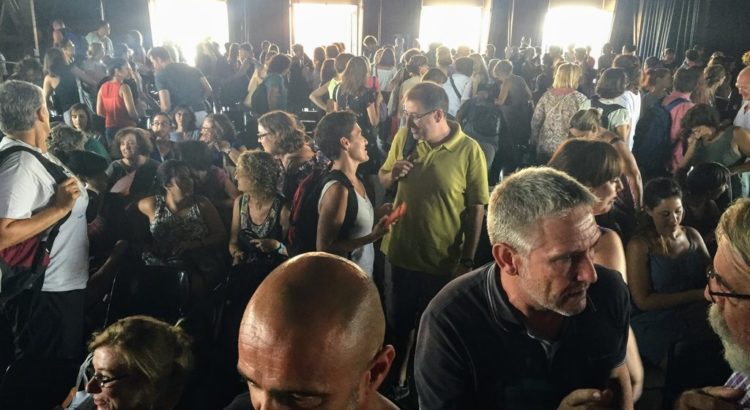
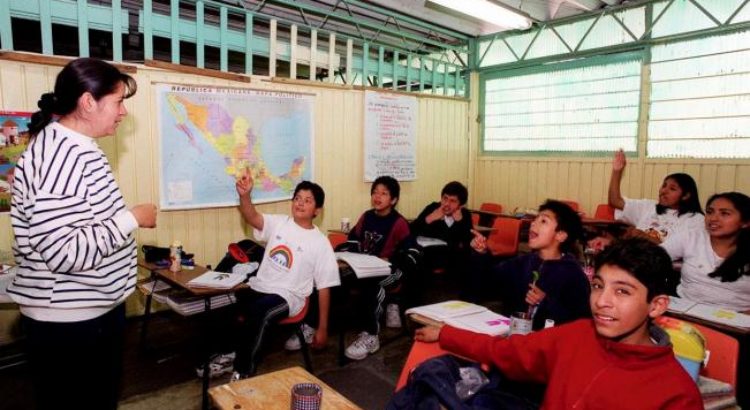
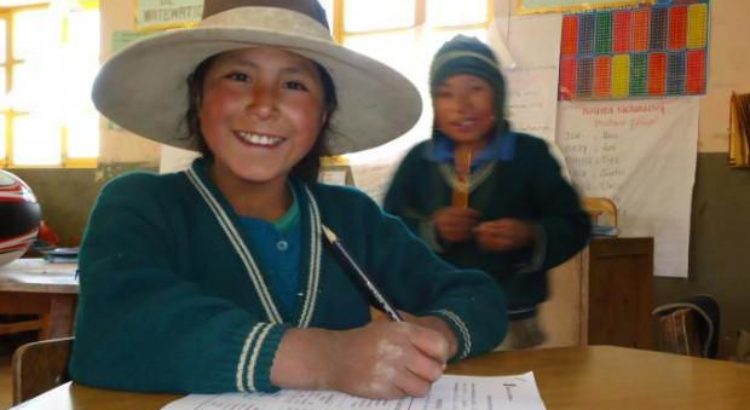
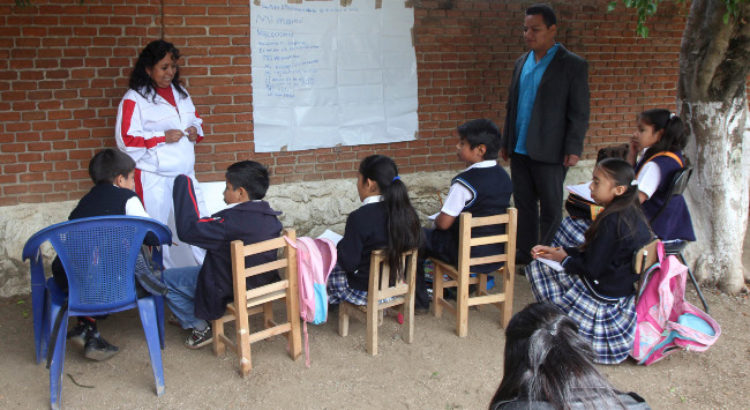
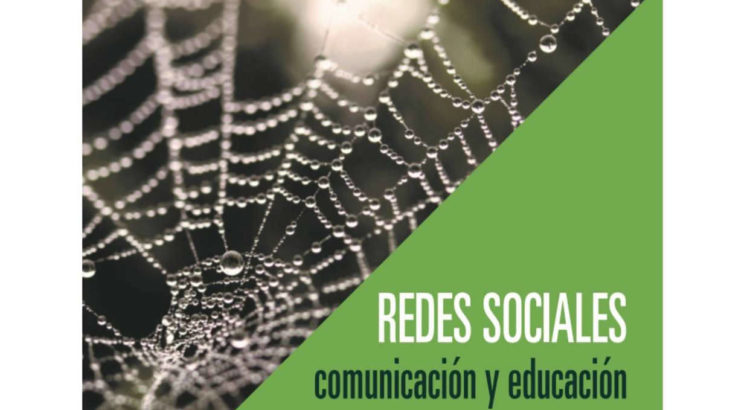

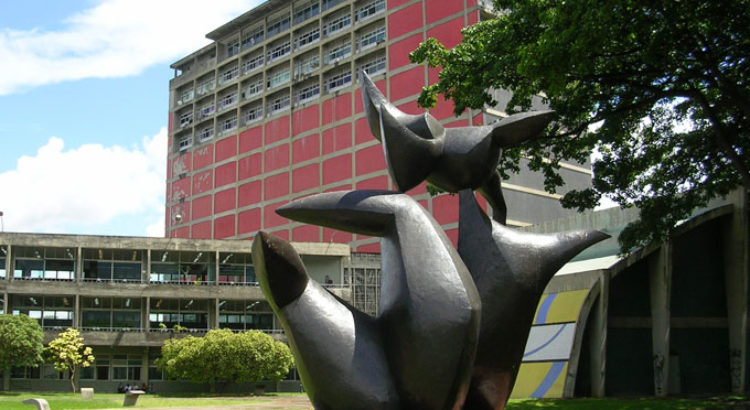







 Users Today : 12
Users Today : 12 Total Users : 35419002
Total Users : 35419002 Views Today : 14
Views Today : 14 Total views : 3353047
Total views : 3353047